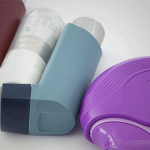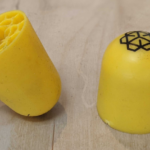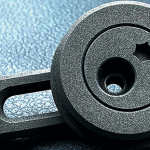- Home
- Industry News
- Where did 3D Printing come from?
Where did 3D Printing come from?
3D Printing Past, Present and Future
Lifting the lid on 3D Printing
3D printing is a hot topic right now. As mainstream media pick it up, and the hype and attention increase, speculation is growing on just what 3D printing technologies can do and where it is all heading.
At Prototype Projects we have been using a number of industrial grade 3D printing technologies for some years now. So here, in a series of posts over the coming weeks, we plan to lay bare the origins of 3D printing, discuss where we are now, and to take a realistic look at what can be expected in the coming years.
In the first of this series we go back to look at the developments of 3D printing technology over the last three decades, since it first emerged in the late 1980’s.
Part 1: Where did 3D Printing Come From?
‘3D printing’ is relatively new terminology that is now universally applied to additive manufacturing technology — a group of different processes that have the common capability of building up parts and products one layer at a time directly from 3D digital data.
Throughout the 80’s and 90’s the technology was commonly called Rapid Prototyping (RP) because the processes were originally conceived as a faster and more cost-effective method of creating prototypes for product development within industry.
The first commercial RP system was the Stereolithography (SLA) process introduced by 3D Systems, who still hold and register many patents in this area today. Within a couple of years of SLA, the Fused Deposition Modelling (FDM) RP process was introduced by Stratasys, and EOS GmbH in Germany offered RP systems based on the laser sintering process, both of which have continued to go from strength to strength.
During these early days, excitement about the processes themselves was widespread as new ways of working and developing new products were explored. At the time, the systems were expensive, the materials limited (plastic only), quality was poor and models were brittle.
Yet cash-rich industry sectors such as aerospace, automotive and medical all saw the long-term potential benefits that the technology offered and bought into it.
The early adopters are reaping the rewards today.
Apart from the manufacturing, engineering and technology companies themselves, another type of business emerged and quickly flourished.
The early specialist prototyping service bureaus like Prototype Projects were entrepreneurial companies that quickly saw the opportunities offered by rapid prototyping. So they invested in the skills and technology they needed and became proficient at maximizing the potential of RP machines and materials.
These service bureaus provided RP services to companies that were unable to – or chose not to – invest their own capital in in-house RP machines.
Throughout the 1990’s and early 2000’s many new RP processes were introduced, all focused wholly on industrial applications. Simultaneously, collaborative R&D between academia and industry focused on developing applications and strengthening the capabilities and output from the machines.
Prototyping applications were still the dominant application area but R&D was also being conducted into specific tooling, casting and direct manufacturing applications. Plastic materials were improved and research also brought forth RP machines that could process nylon and powdered metals, including aluminium, titanium and inconel.
After 2000, as 3D printing gained momentum as universal terminology, the RP sector started to show signs of distinct diversification into two specific areas.
The first area was high end 3D printing on very expensive systems, used by industrial manufacturers and geared towards production of high value, highly engineered parts. This is still ongoing and gaining visibility.
The second area was greatly improved ‘concept modeller’ 3D printers for the improvement of concept development and functional prototyping capabilities.
3D printing itself has hit the headlines this decade as less expensive systems have emerged. As a result 3D printing has become more accessible.
But the low cost machines currently only offer plastic materials and are limited in capability. While they are gaining traction, they are not yet plug-&-play which means that for most SME’s looking for quality concept models, the specialist prototyping bureau still offers the best ROI.
Next time… 3D Printing | where are we now?
Need advice on 3D Printing?
Contact us on 01763 249760





